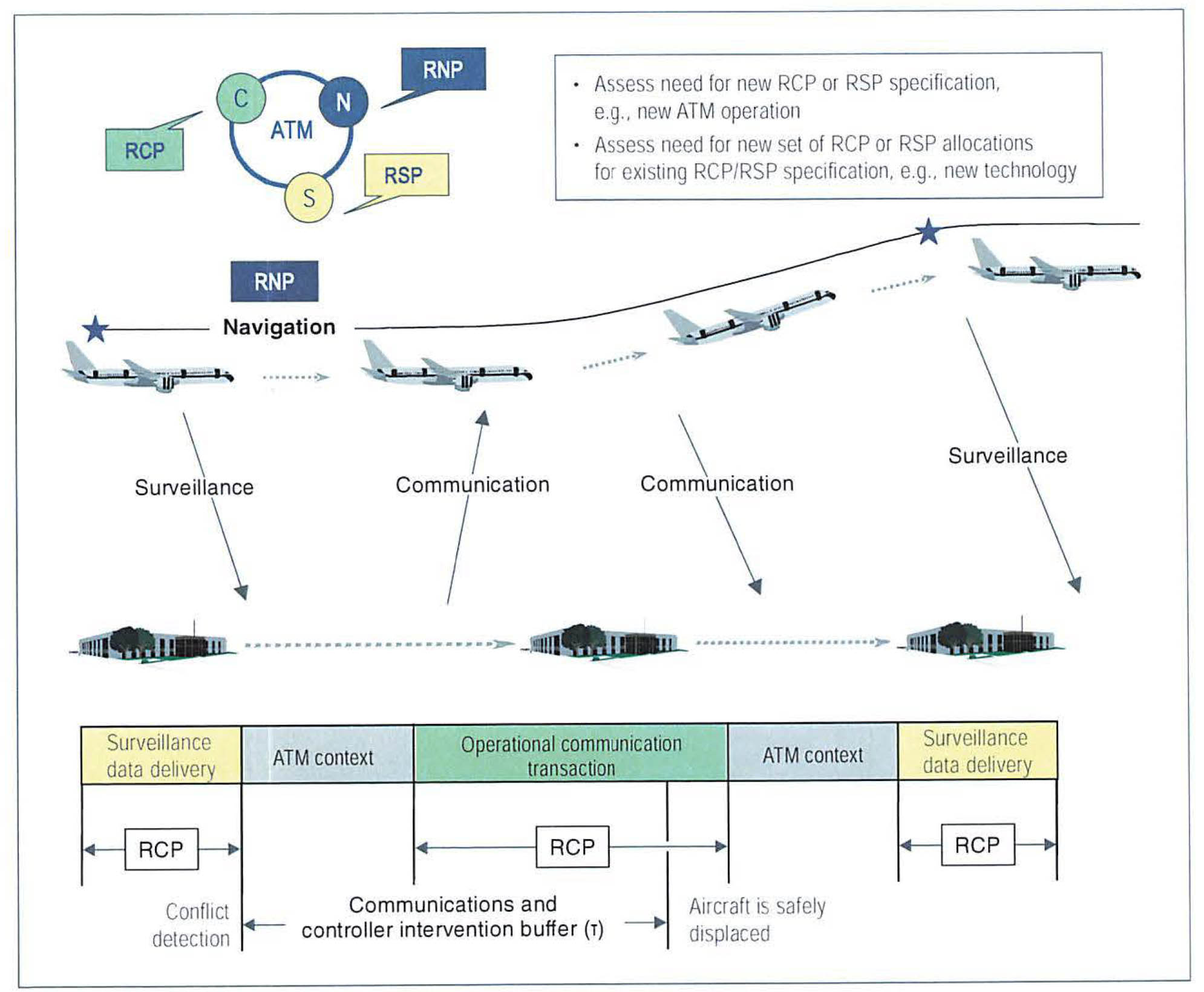Most pilots who have flown internationally in the last decade or so are well acquainted with the concept of Required Navigation Performance (RNP), the idea that where you can fly will be determined on how accurately you can fly and how well the system alerts you when things are less than promised. While it isn't a perfect statement, you can think that the XX in your RNP-XX relates to that accuracy. The same concept holds true for communications and surveillance.
— James Albright

Updated:
2020-12-15
In the case of communications, the number attached to your Required Communications Performance (RCP) is the number of seconds it takes for an instruction to travel from the ground to you and your acknowledgement back to the ground. Does it matter? Yes, the lower the number the tighter the airspace you will be allowed to fly. Put another way, the higher the number, the more airspace around the world that will be denied you.

1
History
The fourth meeting of the Aeronautical Mobile Communications Panel (AMCP/4) (Montreal, April 1996) recognized the absence of objective criteria to evaluate communication performance requirements. This objective criteria was seen as a set of values for parameters, which would be based on the operational requirements for communication systems in the various phases of flight. The meeting agreed that there was an urgent need to assess the various technical options of communication systems against such a set values for these parameters. The term RCP type is used to denote a set of values for these parameters.
Source: ICAO Doc 9869, p. v
This all grew out of the initial efforts to formalize the Future Air Navigation System (FANS) that led to the development of a Required Navigation Performance (RNP) standard. It may not seem as significant as the revolutionary changes seen in navigation, but RCP is the underlying principle behind getting rid of HF and moving toward SATCOM. That also spawned the need to differentiate SATVOICE versus SATCOM.

Operational Concept, RCP and RSP, ICAO Doct 9869, fig 2-1
2
Concept
1.1.1 The performance-based communication and surveillance (PBCS) concept provides objective operational criteria to evaluate different and emerging communication and surveillance technologies, intended for evolving air traffic management (ATM) operations. Once these criteria have been established and accepted, implementation of a specific ATM operation including its technical and human performance may be evaluated against these operational criteria to assess their viability.
1.1.2 The PBCS concept is aligned with that of performance-based navigation (PBN). While the PBN concept applies required navigation performance (RNP) and area navigation (RNAV) specifications to the navigation element, the PBCS concept applies required communication performance (RCP) and required surveillance performance (RSP) specifications to communication and surveillance elements, respectively. Each RCP/RSP specification includes allocated criteria among the components of the communication and surveillance systems involved.
1.1.3 Where beneficial, RCP, RNP/RNAV and RSP specifications are applied to communication, navigation and surveillance elements to ensure that the operational system and its components perform in accordance with the specifications.
Note 1.- While RCP and RSP specifications may be applied where beneficial, the PBCS concept is primarily intended for emerging technologies, and not traditional ones, such as HF voice communication or radar. As such, this edition has considered controller-pilot data link communications (CPDLC), automatic dependent surveillance - contract (ADS-C) and SATVOICE technologies, and may be revised to apply to other technologies, such as automatic dependent surveillance - broadcast (ADS-8), as experience is gained.
Note 2. - Similar to the PBN concept, security is beyond the scope of the PBCS concept. However, in some cases, the RCP and RSP specifications may include criteria to support mitigations from security threats. For example, the RCP and RSP specifications that may be applied to SATVOICE contain provisions for satellite service providers (SSPs) to oversee communication services providers (CSPs), in administering accounts to authorized subscribers with personal identification numbers (PIN) and priority level calling. Aircraft SATVOICE systems only route calls to the flight deck from authorized subscribers or alert the flight crew of the appropriate call priority for ATS communication.
Source: ICAO Doc 9869, ¶1.1
3
RCP specification
An RCP specification represents operational parameters for the complete communication transaction. It is identified by a designator (e.g., RCP 240 or RCP 400) in order to simplify the designator naming convention and to make the RCP Expiration Time (ET) readily apparent to airspace planners, aircraft manufacturers, and operators. The designator represents the value for the communication ET after which the initiator is required to revert to an alternative procedure. The RCP specifications are applied to achieve the performance required of the communication process and may support aircraft separation minima.
Source: AC 90-117, ¶22.15.1
RCP 240 may be applied to maintain the performance for normal means of communication, which supports controller intervention capability in procedurally controlled airspace, where the separation minimum applied is predicated on communication performance.
Source: ICAO Doc 9869, ¶2.2.1.13
RCP 400 may be applied to maintain the performance for emerging technology (e.g. satellite voice) used to provide normal means of communication supporting controller intervention capability in procedurally controlled airspace, where the separation minimum applied is based on position reporting at compulsory reporting points. RCP 400 may also be applied to maintain the performance required for emerging technologies used to provide alternative means of communication, that may be required in combination with the normal means of communication, to which RCP 240 is applied.
Source: ICAO Doc 9869, ¶2.2.1.14
You can think of RCP 400 as old school and RCP 240 as full up CPDLC and ADS-C at the highest levels available in 2020.
References
(Source material)
Advisory Circular 90-117, Data Link Communications, 10/3/17, Department of Transportation
ICAO Doc 9869, Performance-based Communication and Surveillance (PBCS) Manual), Second Edition, 2017, International Civil Aviation Organization